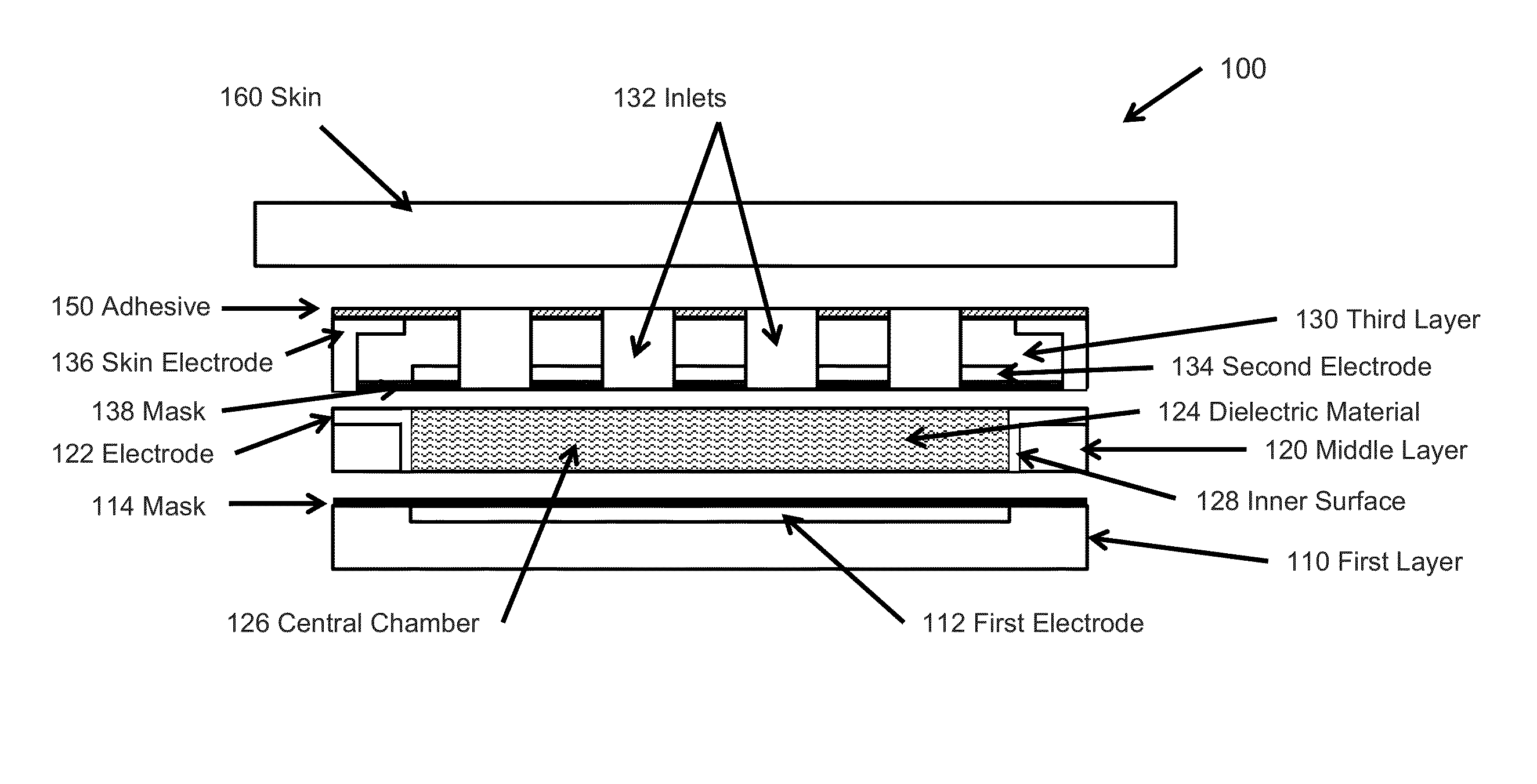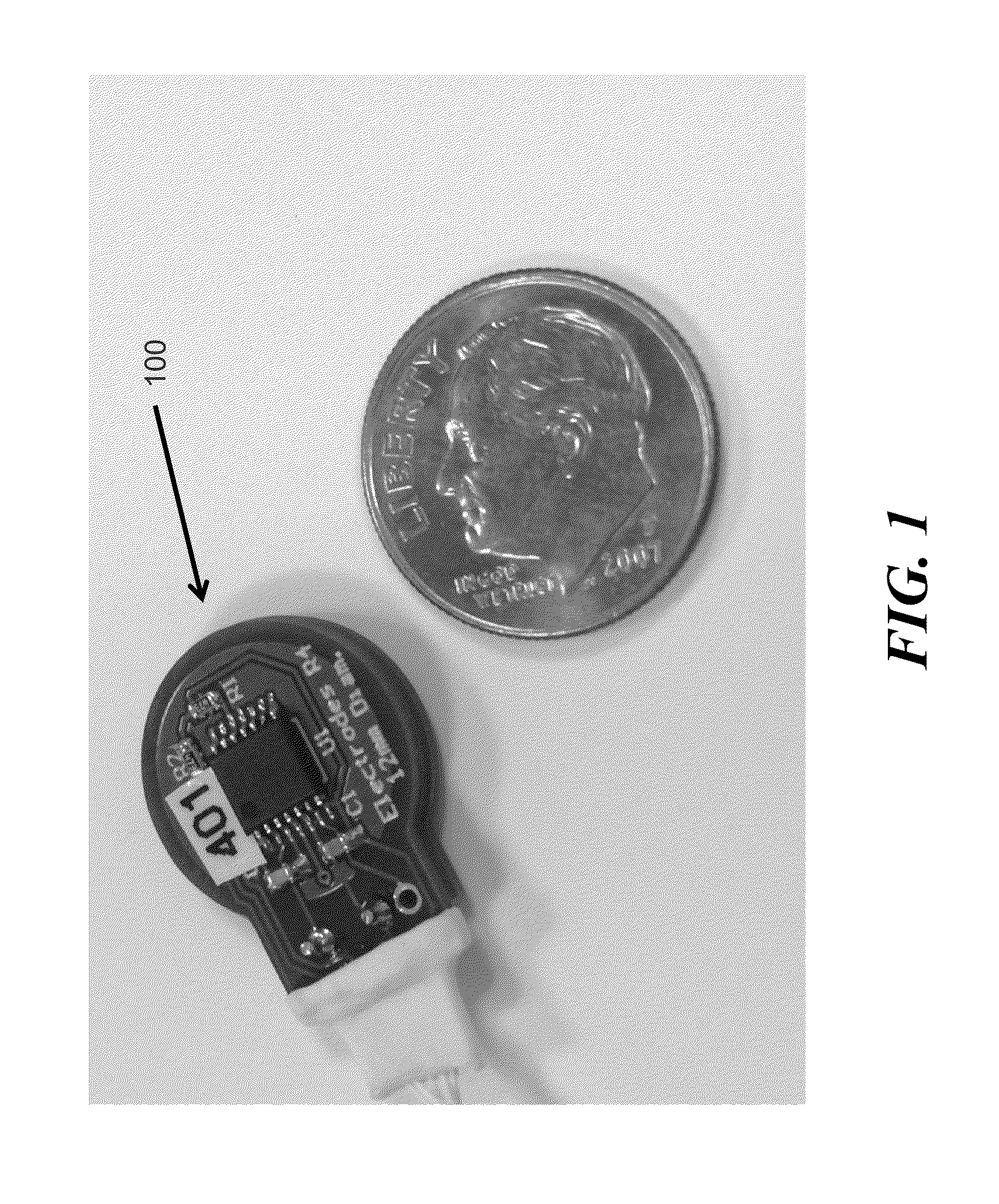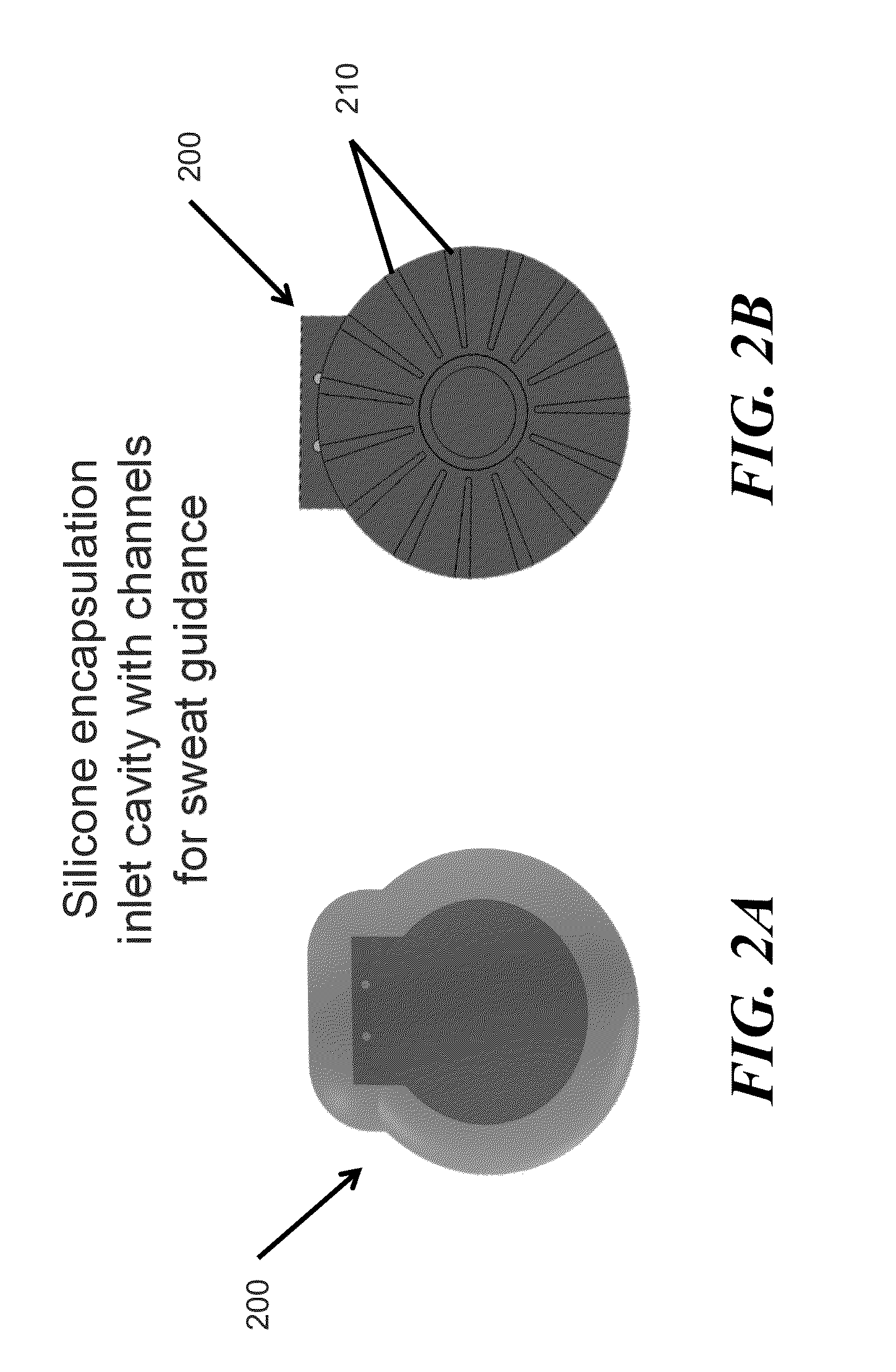Perspiration sensor
a technology of perspiration sensor and sensor body, which is applied in the field of moisture sensor, can solve the problems of not providing quantitative indication of the volume or level of perspiration, and achieve the effects of facilitating moisture absorption, minimizing the introduction of noise, and reducing environmental nois
- Summary
- Abstract
- Description
- Claims
- Application Information
AI Technical Summary
Benefits of technology
Problems solved by technology
Method used
Image
Examples
Embodiment Construction
[0028]The present invention is directed to methods and systems for obtaining a quantitative measurement of moisture. One specific application for the invention includes the detection and measurement of perspiration. For purposes of illustration, the invention is described herein in the context of measuring perspiration, however, embodiments of the invention can be used to measure other sources of moisture.
[0029]In accordance with some embodiments of the invention, the perspiration sensor includes a pair of ground shielded parallel electrodes sandwiching a moisture absorbent dielectric material (e.g., a microfiber cloth) that forms a capacitor. The sensor allows perspiration to become absorbed by moisture absorbent dielectric material which changes the dielectric constant the dielectric material and is reflected in the measured capacitance of the electrode plates of the perspiration sensor. In accordance with some embodiments of the invention, the dielectric material can be electrica...
PUM
 Login to View More
Login to View More Abstract
Description
Claims
Application Information
 Login to View More
Login to View More - R&D
- Intellectual Property
- Life Sciences
- Materials
- Tech Scout
- Unparalleled Data Quality
- Higher Quality Content
- 60% Fewer Hallucinations
Browse by: Latest US Patents, China's latest patents, Technical Efficacy Thesaurus, Application Domain, Technology Topic, Popular Technical Reports.
© 2025 PatSnap. All rights reserved.Legal|Privacy policy|Modern Slavery Act Transparency Statement|Sitemap|About US| Contact US: help@patsnap.com



